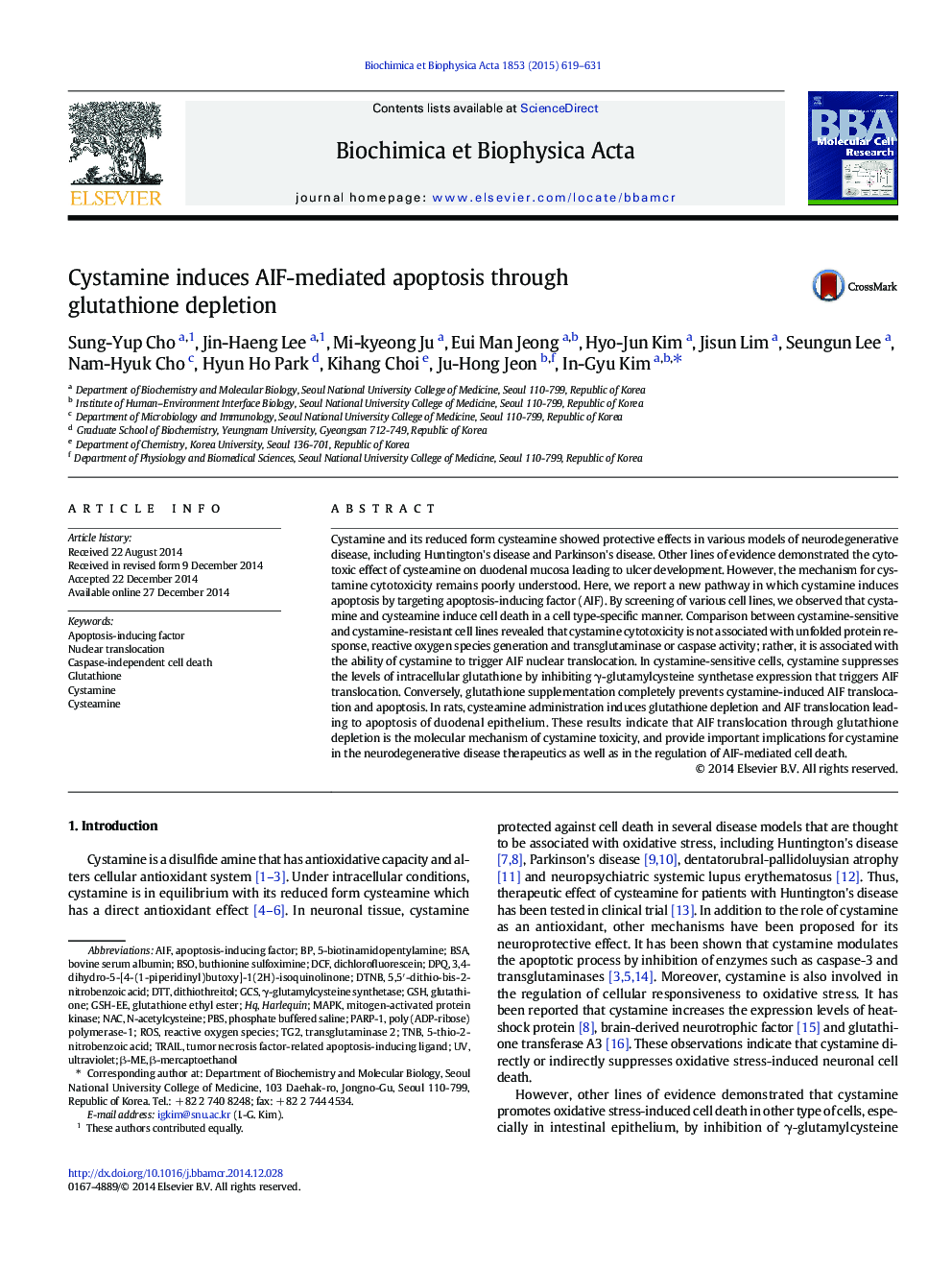| Article ID | Journal | Published Year | Pages | File Type |
|---|---|---|---|---|
| 10801980 | Biochimica et Biophysica Acta (BBA) - Molecular Cell Research | 2015 | 13 Pages |
Abstract
Cystamine and its reduced form cysteamine showed protective effects in various models of neurodegenerative disease, including Huntington's disease and Parkinson's disease. Other lines of evidence demonstrated the cytotoxic effect of cysteamine on duodenal mucosa leading to ulcer development. However, the mechanism for cystamine cytotoxicity remains poorly understood. Here, we report a new pathway in which cystamine induces apoptosis by targeting apoptosis-inducing factor (AIF). By screening of various cell lines, we observed that cystamine and cysteamine induce cell death in a cell type-specific manner. Comparison between cystamine-sensitive and cystamine-resistant cell lines revealed that cystamine cytotoxicity is not associated with unfolded protein response, reactive oxygen species generation and transglutaminase or caspase activity; rather, it is associated with the ability of cystamine to trigger AIF nuclear translocation. In cystamine-sensitive cells, cystamine suppresses the levels of intracellular glutathione by inhibiting γ-glutamylcysteine synthetase expression that triggers AIF translocation. Conversely, glutathione supplementation completely prevents cystamine-induced AIF translocation and apoptosis. In rats, cysteamine administration induces glutathione depletion and AIF translocation leading to apoptosis of duodenal epithelium. These results indicate that AIF translocation through glutathione depletion is the molecular mechanism of cystamine toxicity, and provide important implications for cystamine in the neurodegenerative disease therapeutics as well as in the regulation of AIF-mediated cell death.
Keywords
Related Topics
Life Sciences
Biochemistry, Genetics and Molecular Biology
Biochemistry
Authors
Sung-Yup Cho, Jin-Haeng Lee, Mi-kyeong Ju, Eui Man Jeong, Hyo-Jun Kim, Jisun Lim, Seungun Lee, Nam-Hyuk Cho, Hyun Ho Park, Kihang Choi, Ju-Hong Jeon, In-Gyu Kim,
